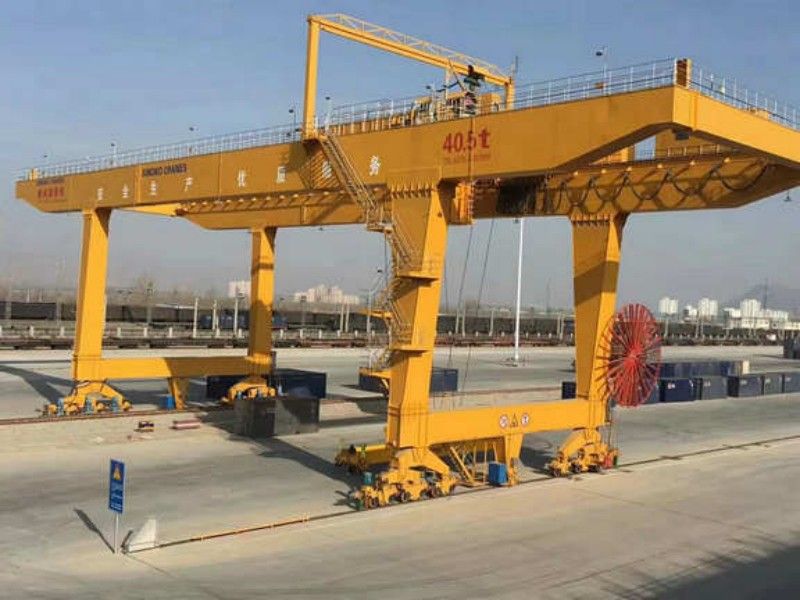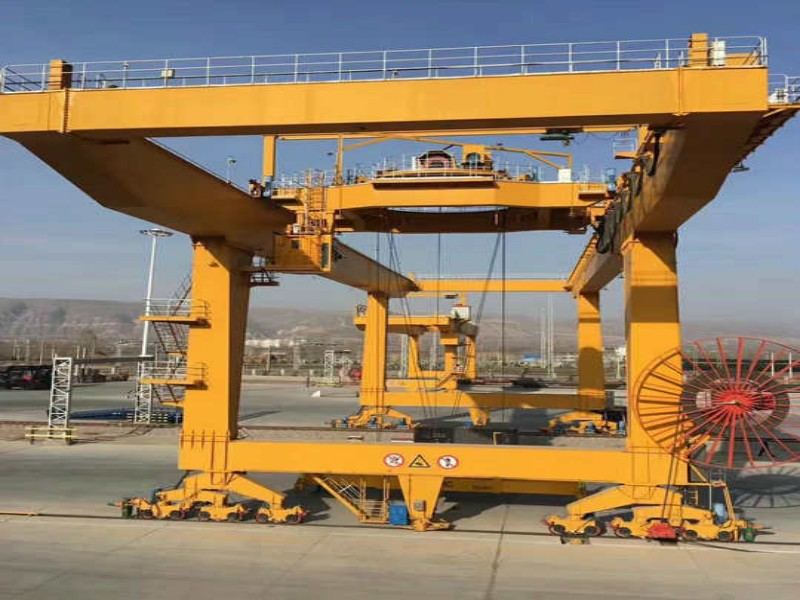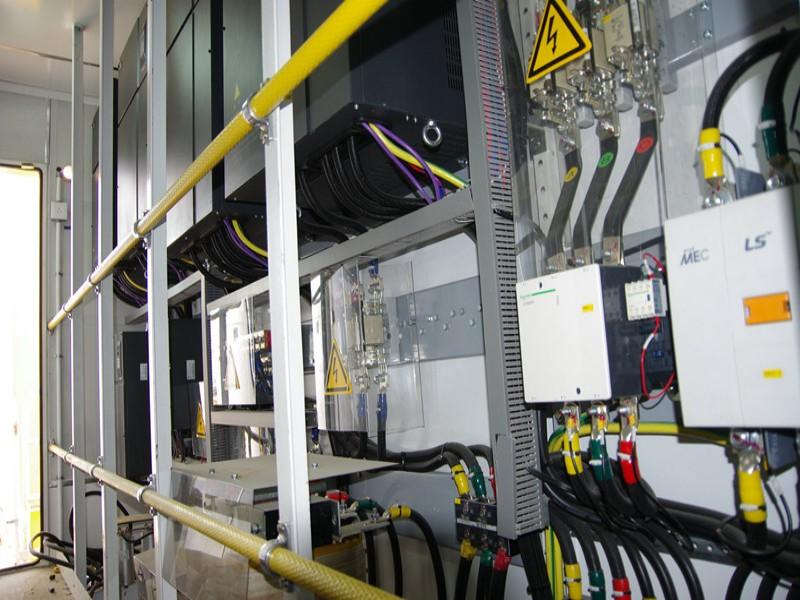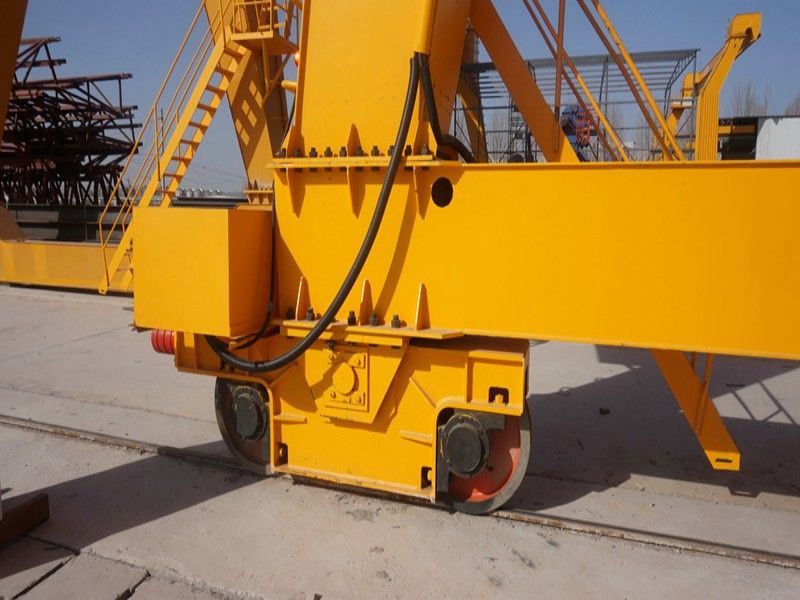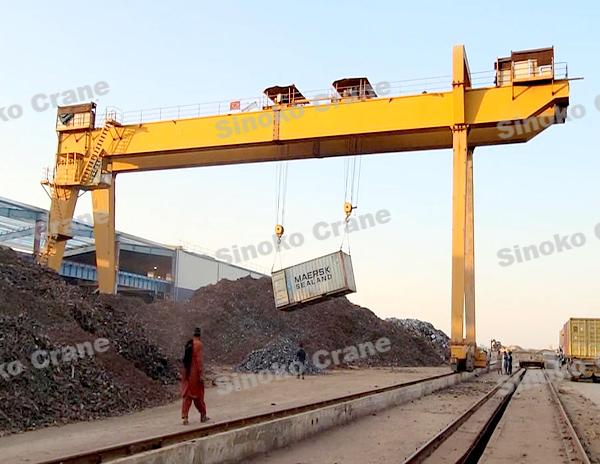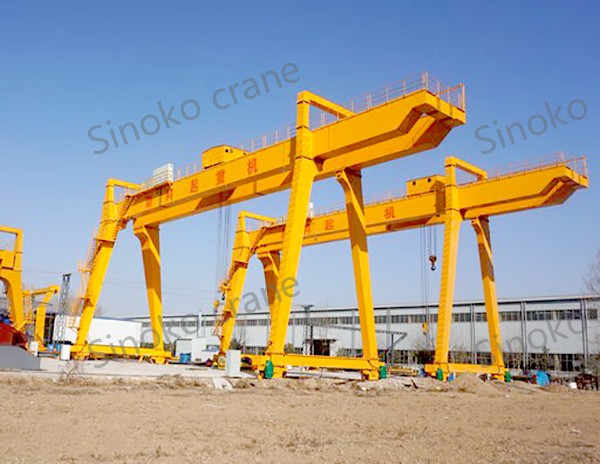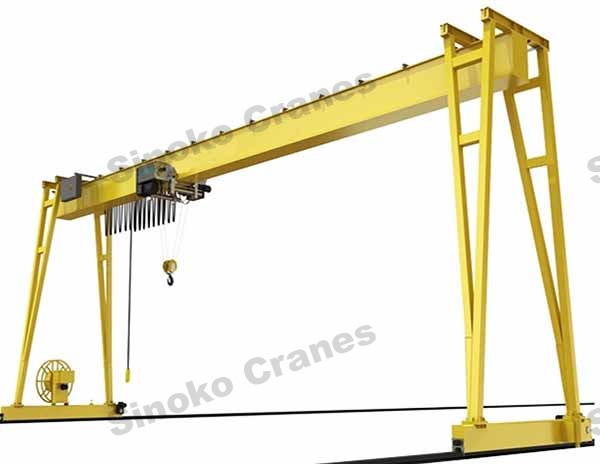Shore container cranes:
The trolley of rail container gantry crane running speed is much lower, usually no damping device. If users will ask to reduce operating intensity and improve production efficiency requirements, the anti-roll device will be used. For rope hoisting gear, the swaying is usually achieved by damping the rope. For rigid lifting gear, the swaying is achieved by the steel members.
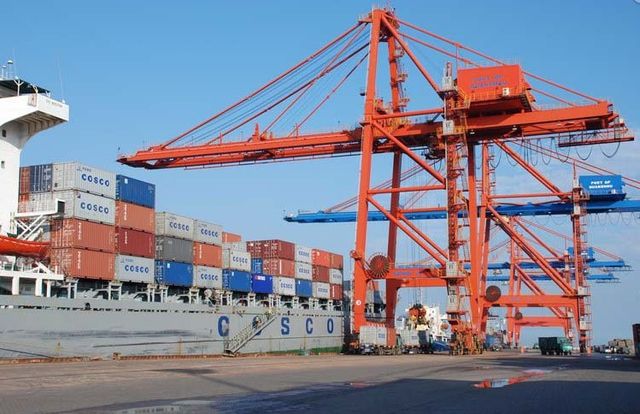
Rail container gantry cranes:
Due to the container on both sides of the space through the legs, so the space of the door and leg has larger clearance. According to the different forms of bearing of the main beam, the rail container gantry crane generally adopts the upper part of the door and leg to be opened in a "U" type and the upper part of the door and leg passes through the "Π" type. The structure of the rail container gantry crane does not have to pass through the space inside the leg of the container gantry crane, so the structure is relatively simple.
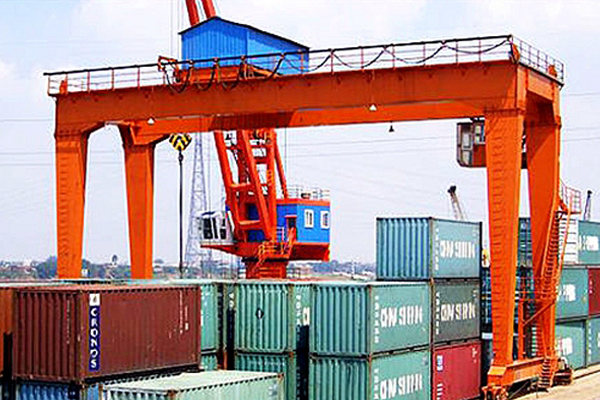
Features
1. Box type girder, which increases the work space, and convenient for installation and maintenance;
2. Trolley power supply adopts profiled rails, safety slide line and the cable conductive device system;
3. Components standardization, seriation and generalization;
4. Crane power supply can be from cable reel (left and right) and sliding line( left and right);
5. Good operation vision of cab, equipped the internal linkage control console, flexible and comfortable operation, install of fan, heater, cooler, air-conditions and intercom according to the customers' requirements;
6. Customized according to the users' needs of working environment, types of power source and the other technical requirements. Also design and manufacture span according to users' requirements.
Specification
| Lifting capacity | t | 35 | |
| Span | m | 30 | |
| Lifting Height | m | 36 | |
| Working system | A6 | ||
Speed | Hoisting | m/min | 0~10 |
| crab travelling | 3.4~34 | ||
trolley travelling | 2.9~29 | ||
| Max.wheelload | KN | 295 | |
| Steel track reeommended | QU80 | ||
| Power source | 3-phase A.C.50Hz380V | ||
| Load and unload of goods | 20'40'Container | ||
CASE
Looking for a reliable solution to enhance your container handling efficiency? Our Gantry Crane projects are tailored to meet the specific needs of various industries, offering superior performance, durability, and customization options. Explore our successful case studies to see how we’ve helped clients optimize their operations.
Pakistan Scrap Steel Dumping Container Gantry Crane Project Case
The Sinoko crane, leveraging years of experience and outstanding technology, designed a container gantry crane for customers, successfully solving the problem of transporting scrap steel for them.
Learn More Get a Quote40.5T Rail-Mounted Gantry Crane Installation for Port Logistics Efficiency
The RMG gantry crane designed and manufactured by Sinokocrane has effectively solved the problems for the customers and reduced their operational costs.
Learn More Get a QuoteInstallation of 10T European-Style Gantry Crane for Pakistani Client by Sinoko Cranes
Struggling with slow manual gates? Sinoko's European gantry crane slashed Pakistan customer's downtime by 64%! Transform your access efficiency – contact us!
Learn More Get a QuoteFAQs
The FEM Standard Container Gantry Crane is primarily designed for lifting and transporting containers in ports, terminals, and industrial facilities. It ensures efficient loading and unloading operations, improving productivity and reducing turnaround times.
The crane uses a gantry structure that spans across container stacks. It is equipped with hoists and trolley systems to lift and move containers horizontally and vertically with precision, offering maximum stability and safety during operations.
This crane offers high lifting capacity, precise load handling, and advanced safety features like anti-sway technology, overload protection, and automatic speed control. It is also built to meet the European FEM standards for durability and reliability.
Yes, Sinoko Cranes can customize the FEM Standard Container Gantry Crane based on your specific needs. Options for modifications include different lifting capacities, span widths, and other design adjustments to match your operational requirements.
Yes, the FEM Standard Container Gantry Crane can be tailored to meet specific operational needs, including adjusting the lifting height, span, and load capacity. Customization options are available to ensure the crane suits your facility’s requirements.
Regular maintenance is crucial to ensure the optimal performance and longevity of the crane. Maintenance involves routine inspections, lubrication of moving parts, checking the control systems, and ensuring the structural integrity of the crane. It's recommended to follow the manufacturer’s maintenance schedule for best results.













